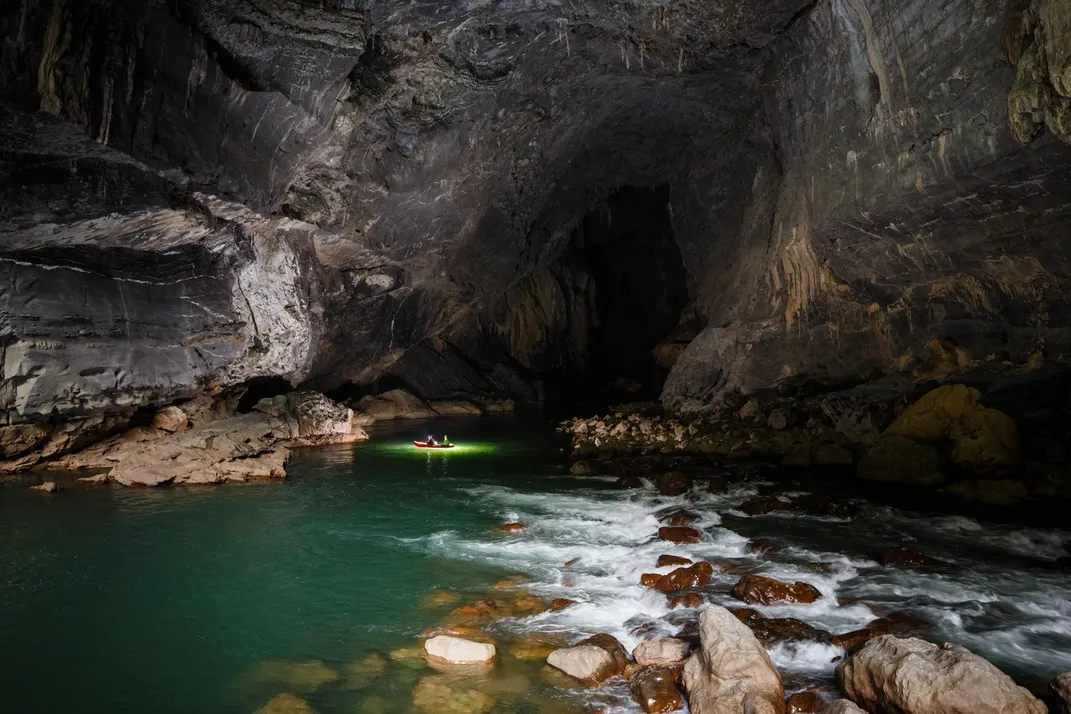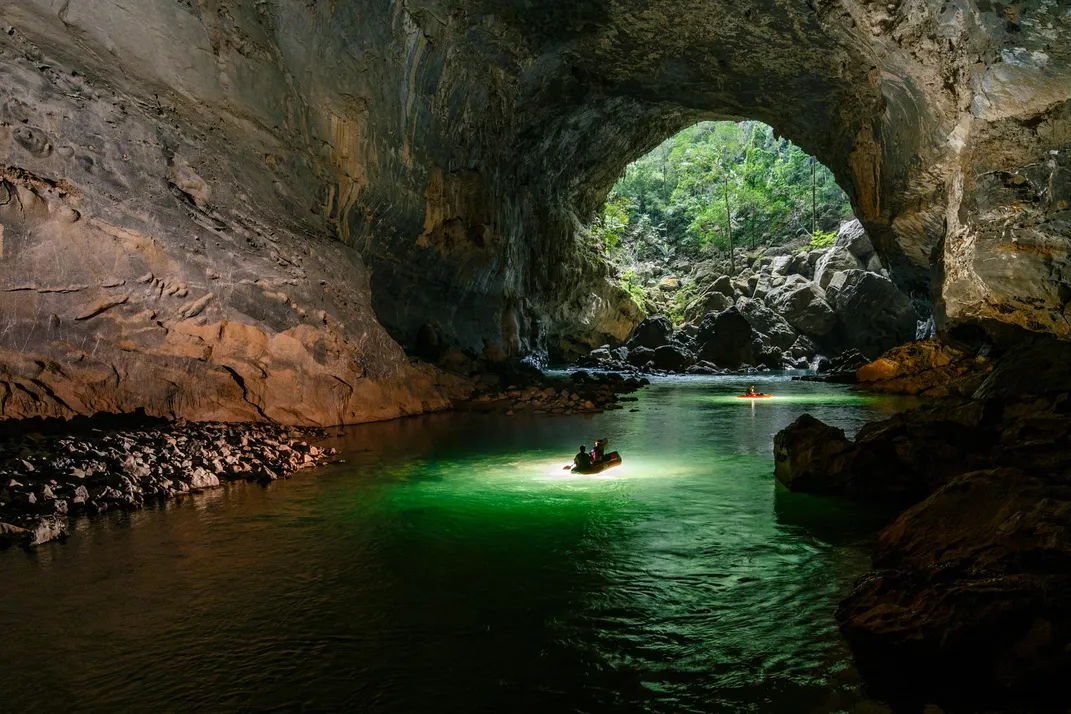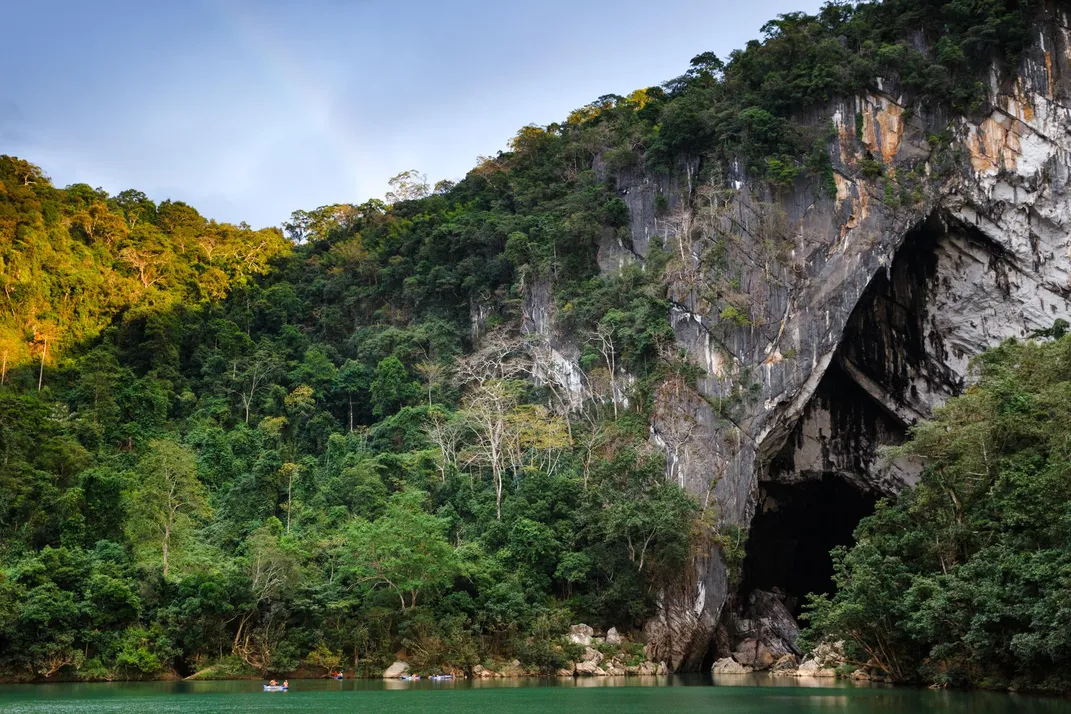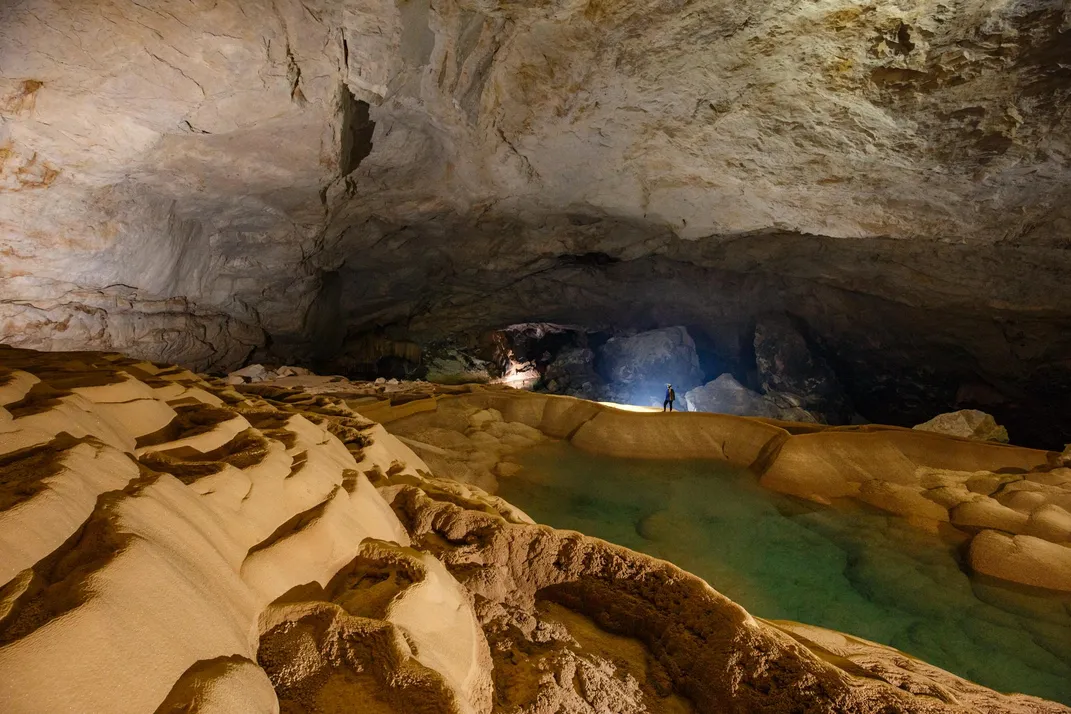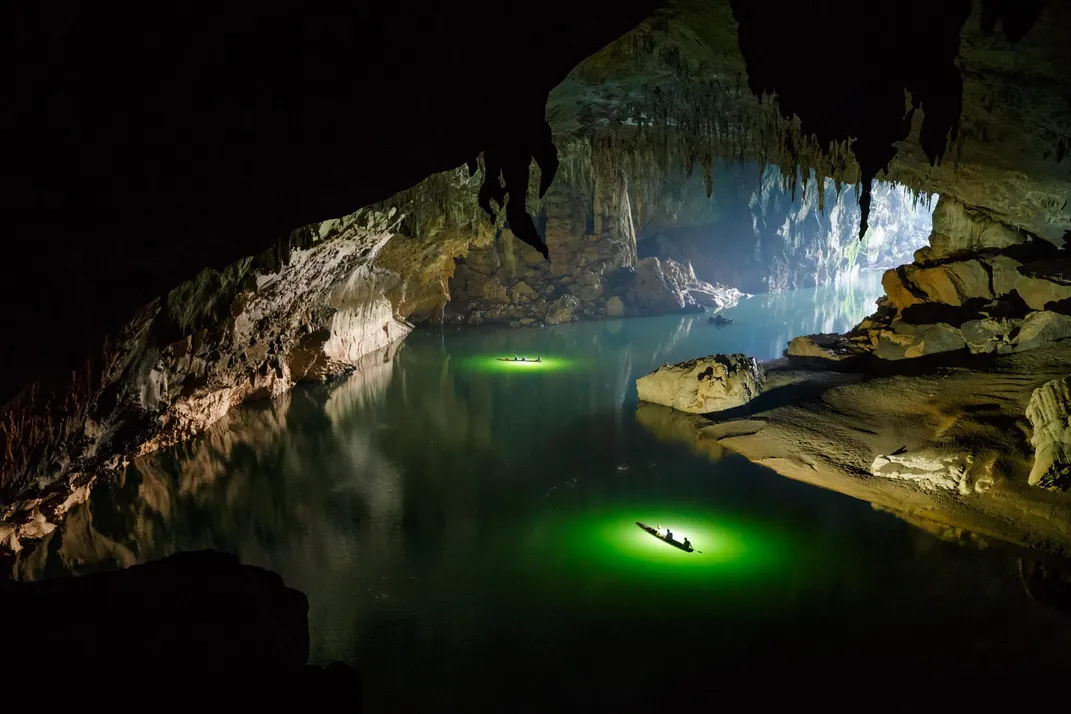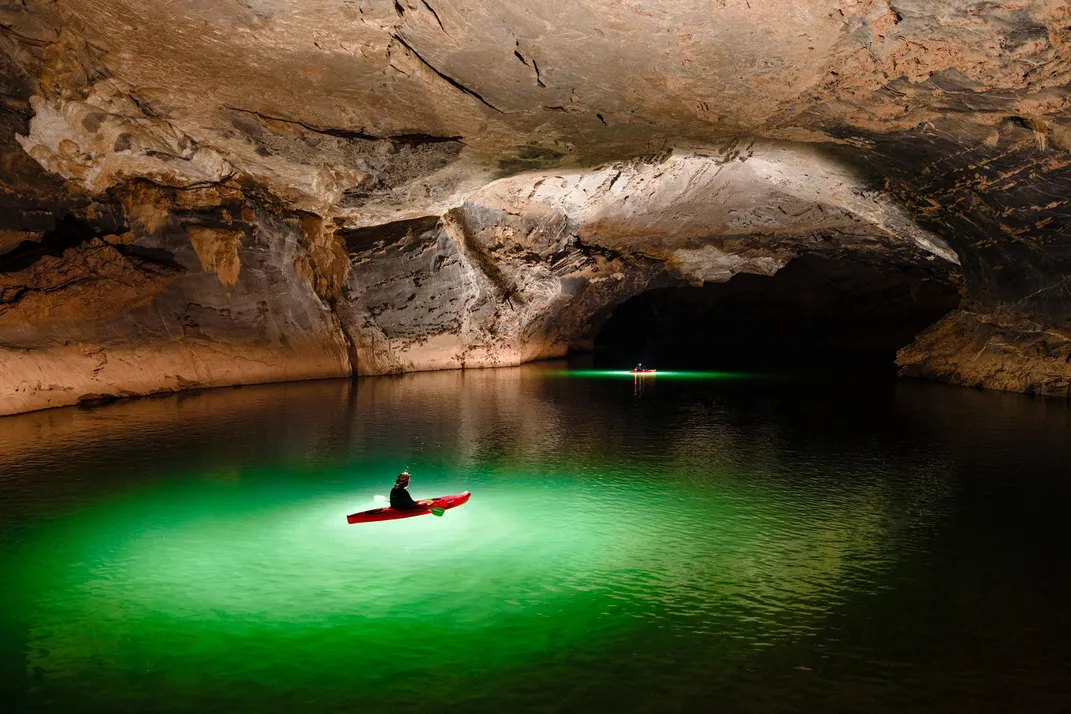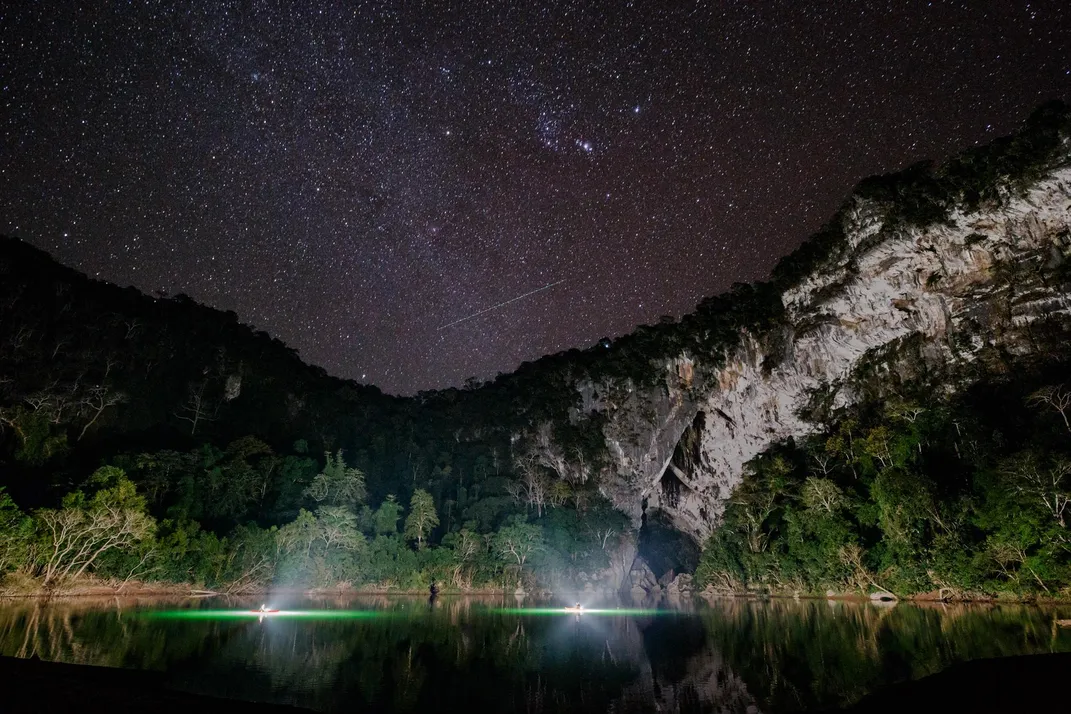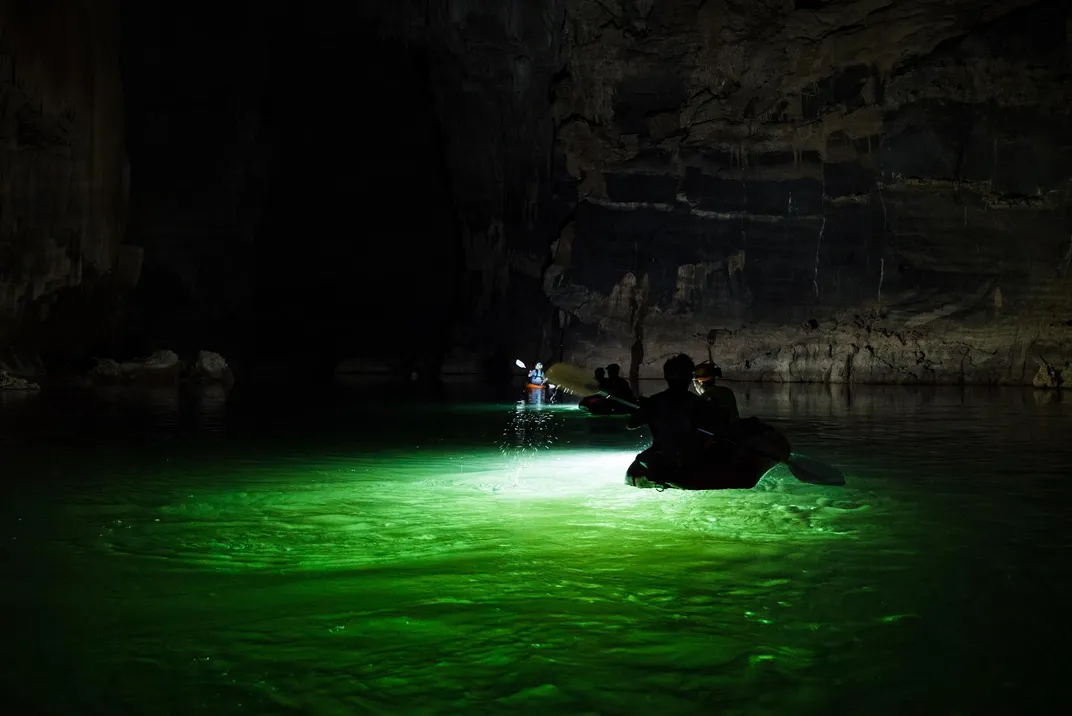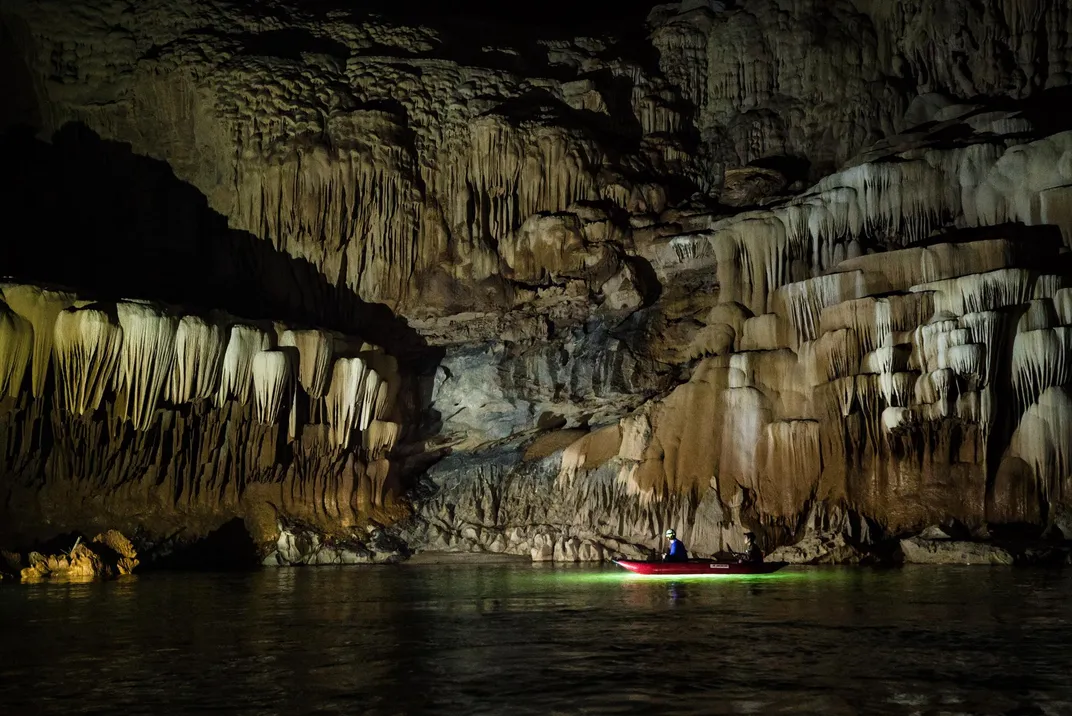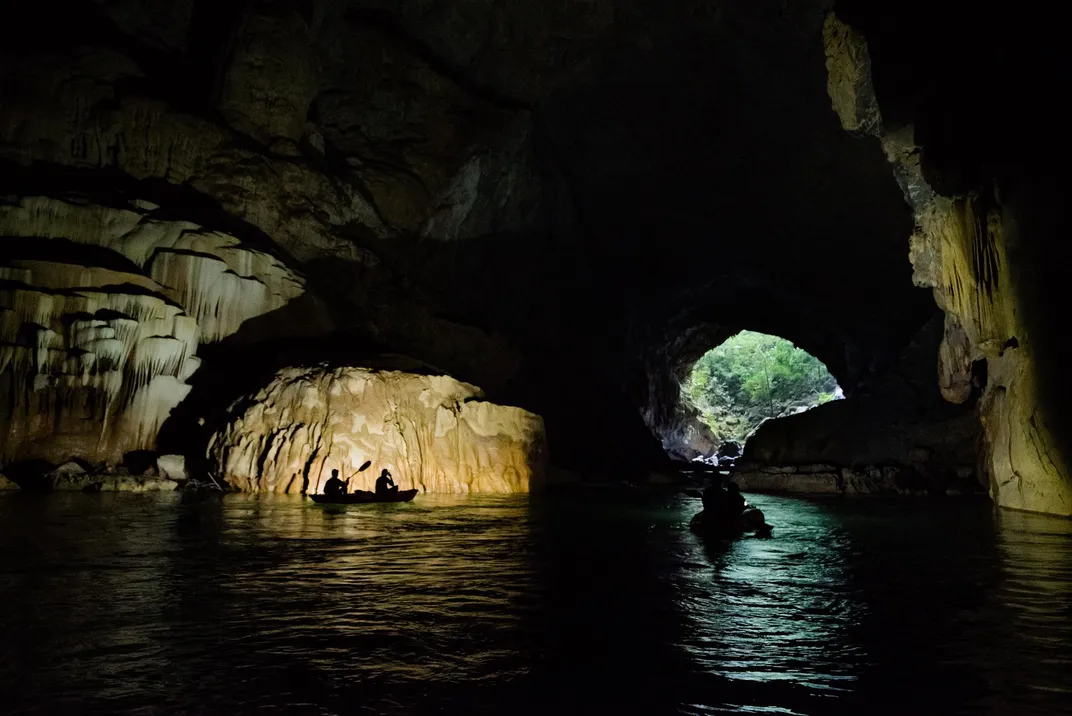Otherworldly Photos From Inside One of the World’s Largest River Caves
Studded with cave pearls and home to elusive giant spiders, this cave is one of Laos’ hidden treasures
Deep in Laos lies a four mile-long river cave—an underground cache filled with 65-foot stalagmites, gigantic rimpools, cave pearls and even (gulp) giant spiders. Though it opened to tourists in 2005, Tham Khoun Xe's location is so remote and the cave's watery interior so extensive (with occasional underground rapids blocking the way), few have explored it.
For photographer Ryan Deboodt, Tham Khoun Xe's inaccessibility offered a tantalizing challenge. Deboodt has spent a good portion of the last five years underground documenting caves, which are among the world’s least-documented geological formations. Some speleologists estimate that at least half of the world's caves have never been visited by humans.
At first, Deboodt didn't plan on devoting his career to photographing caves: He just wanted to explore them. The Bejing-based photographer first began documenting his otherworldly subjects in 2011, when his wife’s job took the couple to Ho Chi Minh City, Vietnam. Their move coincided with a deluge of caving discoveries in the region—most notably the exploration of Hang Sơn Đoòng, the world’s largest cave passage. After coming face to face with some of these spectacular formations, Deboodt felt compelled to share these hidden landscapes with the world.
Deboodt's recent exploration of Tham Khoun Xe took the photographer farther into the cave than most tourists get to go. He and his companions spent two days kayaking seven kilometers on the underground river, portaging over rapids, and exploring several of the caves many side chambers, returning outside only in the evenings to set up camp.
Tham Khoun Xe Cave has one of the largest known river passages in the world, as the Xe Bang Fai River snakes through it to eventually meet the Mekong River. The cave, which stretches an average of 76 meters in width and 56 meters in height, was formed as the river carved through the layers of sandstones and carbonates that make up the Nakhai Plateau. Known by locals for centuries, the first international explorer to enter the cavern was Paul Macey, who traversed the entire river passage by bamboo raft in 1905. Political turmoil in the region kept international researchers from further explorations for almost 90 years, but new expeditions in 1995 and 2006 brought renewed attention to the cave. These trips documented stunning formations including 20-meter-tall stalagmites and an extensive area of rimstone pools, tiered pools of water rimed by calcite deposits.
Armed with multiple cameras, video equipment, a drone and plenty of back-up flashlights, Deboodt braved the cavern's depths and got some spectacular photos in return. He talks to Smithsonian.com about the experience:
What got you interested in documenting Tham Khoun Xe?
I went with a group of people that I’ve done a lot of work with. It was a trip they wanted to do for a while. I don’t want to say it’s a well-known cave, but it's known among cavers. It’s one of the largest active river cave passages in the world, so my friends in Vietnam were really excited, and I got asked to come along and photograph and film it.
The cave only opened up to tourists around 2005?
It’s in Hin Namno National Park in Laos. The national park takes people in. I think you can go in around 300 meters or two kilometers in. So that’s what they do with tourists. For our trip, we went all the way through the cave, so a total of seven kilometers. The national park [invited] us to take a look and photograph it.
Describe your journey to the cave.
It’s a pretty big journey. We started in Vietnam and crossed the boarder to Laos. Once we got to Laos, the road condition was quite poor. Dirt roads, and the bridges were damaged from floods from the previous years. It took a day of driving to get to the cave. When we got to the cave, we set up camp by the downstream entrance. From there, we spent two days kayaking inside the cave. We started at the downstream entrance and then went to the upstream entrance. Through the caves there are about seven to eight small waterfalls where we had to get out and carry our kayaks.
What geological formations stood out to you?
Since it’s still an active river cave, there’s actually not a lot in the main passage. The flooding every year washes the big stuff away, so a lot of the stuff is in the side passages, but there’s really some huge stuff there. The shot of the person standing in one of the big rimpools? That’s one of the largest rimpools in the world. Off to the sides, there are these amazingly large stalagmites and stalactites. It’s very empty, but then you look up in the distance and see these huge stalagmites. It’s a very strange feeling—it’s so empty and yet there’s so much big stuff on the sides.
Did you come across any wildlife?
I didn’t see any cave life in there, but what we did find—and this is a report that was done by cavers before—were [the remains of] some extremely large spiders. In some parts of cave, you can find their legs. We saw these things that looked kind of like sticks, but it turned out they were big spider legs. Seeing how big those legs were, you could just tell how big those spiders are. It’s not something that you really care to run into in the dark.
It sounds like something out of Tolkien. What about video interests you, in comparison to still photography?
It just creates a new perspective for me on the caves and a new challenge. Cave photography is already really difficult, and filming is another step up. You have to deal with all the movements, and it’s quite a bit harder. I like the challenge involved with it. Also, sometimes by filming caves, you can experience the cave in a different way than you can through still photos. I especially like using drones or quadcopters in the cave; it’s a whole new perspective on caves. It shows the immense size of them very well.
What did you use to shoot this cave?
For all the areal shots I had a DJI Phantom Three. For ground shots, I used a Sony a7S.
Which images have stayed with you the most from the shoot?
By far my favorite image is the photo where I’m up high looking [down] on two people on boats riding up the water with the daylight coming in through the entrance. That’s definitely a shot that I won’t forget.
What was it like to capture that moment?
It was a steep climb. I was shooting really high above the water—basically I was on a little balcony that formed near the ceiling of the cave. So you climb up there, you look down on the river and on the entrance—it’s a stunning sight with the two boats there with the light hitting the water. It was something special.
Did you encounter anything unexpected during the shoot?
One shot in the film is this really long straight passage. That doesn’t happen very often in caves. You’re standing on one end and looking down on the other end and it’s just massive, this straight, long, huge passage. That’s stuff that when you come across, it’s surprising. To see things that big, that straight and the fact that nature built it so straight and it’s not manmade, it’s surprising.
Were you hoping to get anything across through this series?
A big thing I wanted to show was how large this cave really was. I set up in places where we look small and the cave passages look big. That’s one of my driving motivations for a lot of my cave stuff, showing the immense scale—showing how unbelievable it is that these places actually form.
What keeps you coming back to caves in Vietnam?
Some of these caves nobody has ever been in, nobody’s ever seen. Or people have seen just the entrance. A lot of times, we work with people who used to illegally hunt in the jungle, who now help find caves and basically work as porters, cook our food and that kind of stuff. They’ll take us to places they’ve seen [during their] time in the jungle. [It's] a steadier income, and they can rely on this income. At least one company runs tours through the caves, and they employ 200 local people as porters. Now they have steady incomes, and they don’t have to worry about being arrested because hunting in the jungle [a protected park] is illegal.
What are some popular misconceptions about caves?
There’s a surprising amount of people who think the caves are pre-lit. I also think some people don’t realize how fragile caves are. You can be walking through and, for example, [come] across cave pearls. They’ve formed over thousands of years, and they’re these small little rocks—most times perfectly round—and they look like pearls. They’re just rocks, and if you walk on them, if you touch them, that can stop the formation because [of] the oils of your skin. That is how fragile the cave pearls are. The oils of your skin make it so the calcite no longer sticks to the cave pearls and they stop forming. Some of the stalagmites can be formed on mud, so if you touch them, they can fall over. If you hit [the ceiling with] your head, it can destroy [stalactites] that have formed for hundreds of thousands of years—and it’ll take that long for them to form again.
What’s your next project?
I have a couple things I’m working on. This past year, I set up some time-lapse cameras in caves in Vietnam to document the flooding there. I set up three cameras inside of a cave that took a photo once an hour for six months, hopefully capturing something really unique there. I’m going to Vietnam this week or next week to pick up my camera. [Then] I’m going on a five-week caving expedition to search and explore new caves.
Keep track of Deboodt's latest projects by following him here.
